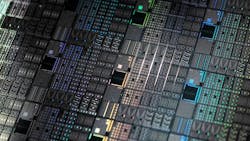Taking a Quantum Leap from Lab to Fab (Download)
Quantum computing is arguably one of the hottest topics in research right now. Quantum computers harness the power of quantum mechanical phenomena to solve certain problems faster than the best classical computers. If developed to a sufficient level of maturity, they could one day help compose the perfect medicine on a molecular level as well as help solve other—currently intractable—problems in materials research, chemistry, numerical mathematics, and cryptographic spaces.
The keyword here is “could.” Before quantum computers become practical (that is, capable of solving currently intractable problems), major hurdles must be cleared. Notably, scaling up the number of qubits—the information units in these devices—remains a key barrier.
